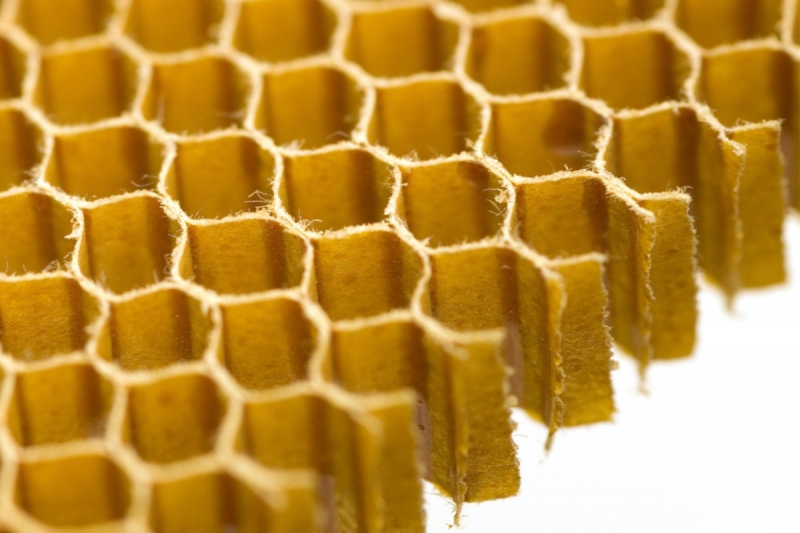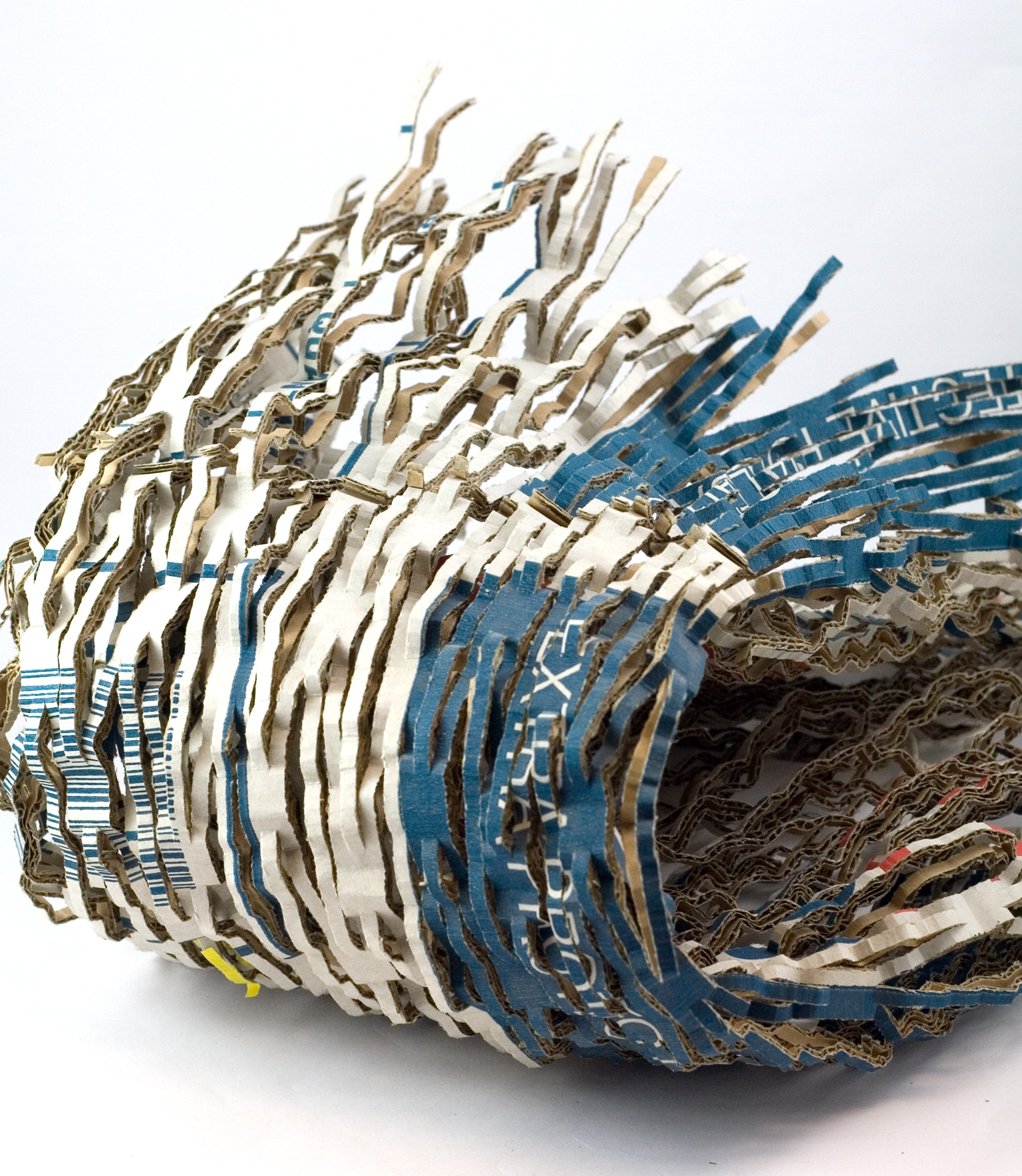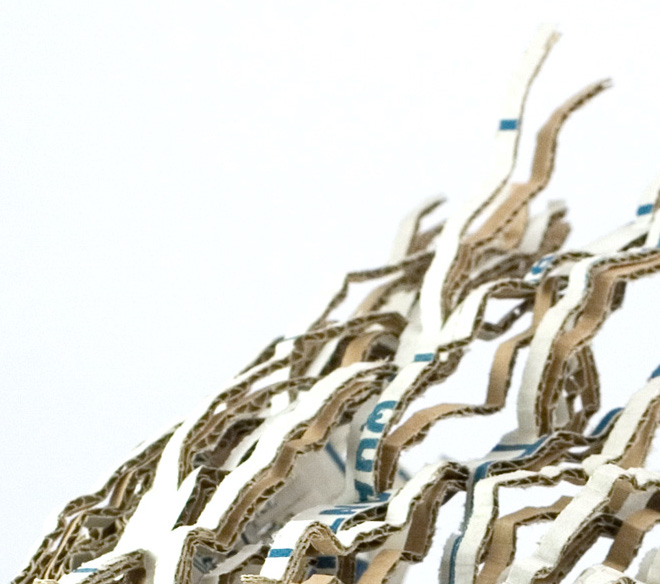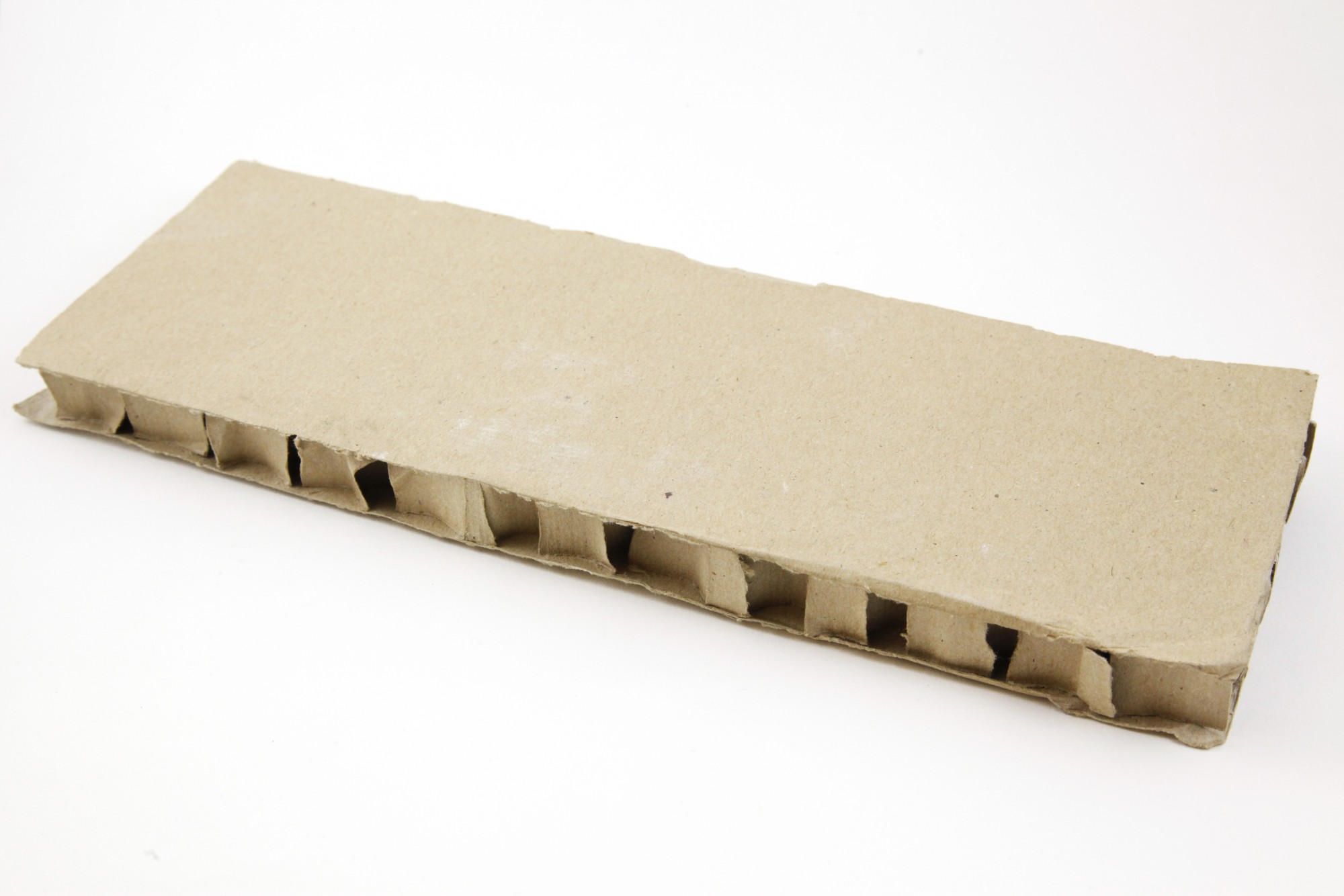Materials Up Close & Personal: CARDBOARD
30 April 2020

That essential item you’ve been waiting for has finally arrived in the post! And in it comes, housed in its fibrous brown mantle. Humble cardboard, so much a part of our everyday life, but so overlooked.
Cardboard is often thought of as simple, unsophisticated, disposable and fragile: we talk about a ‘cardboard character’ when fictional figures don’t quite seem real. It has a reputation for being a material without substance, suitable only for tampons, tissue boxes and toilet rolls.
Well, think again!
Although it doesn’t have quite the same artistic and literary credentials as its cousin paper, cardboard boxes have long-provided food for the imaginations of children, for whom they can become a spaceship, treasure chest or a washing machine. Cardboard has also provided inspiration for a number of architects and designers, including Frank Gehry, whose cardboard ‘Wiggle Side Chair’ celebrated the disposability of this everyday material: in his words, “the nice thing about it is that you can simply tear a bit off and throw it away if you don’t like it”.
Whilst Gehry’s approach to cardboard was distinctly wasteful, other architects have valued this versatile material for its recyclability, light weight, low cost and excellent thermal and acoustic properties. For example, architects Cottrell & Vermeulen won two RIBA prizes for their 2001 Cardboard Building at a school in Essex, which uses a combination of cardboard and wood in origami-like formations to create the load-bearing walls and roof, with cardboard tubes used as columns and palisades. This largely recyclable building has a lifespan of 20 years.


One major drawback, of course, is that cardboard gets soggy. Papers and cardboards are hygroscopic materials, meaning that they absorb moisture from the atmosphere. This moisture can weaken the hydrogen bonds that are formed between cellulose chains during the production process, so it doesn’t take much to turn this structural material back into the pulpy mess from whence it came. In architectural contexts they get around this by combining cardboard with other materials (aluminium, wax) to provide protective facades, coatings and fillers that make it more water resistant and fire retardant. If these additions can’t be removed at the end of the material’s useful life though they can make cardboard impossible to recycle.
The same is true of cardboard that’s stained with food, like a greasy pizza box. Recycling cardboard is a cold process, unlike the fiery recycling of glass, metal and plastics, so the oils from food can’t be burnt away. Grease gunks up the recycling equipment and coats the recovered cardboard fibres, making them too short to be usefully made into a recycled product. That doesn’t mean you should just bin the whole pizza box though: you could tear it up for composting, or rip up and recycle the non-greasy parts.
Packaging experts are very keen to point out that the corrugated sandwich used for our pizza boxes and ‘true’ cardboard (the stuff of cereal boxes, beer mats and jigsaw puzzles) and are two very different beasts. Whereas cereal boxes are basically a thick and sturdy form of paper, corrugated cardboard is much stronger and harder to fold by hand - as you’ll know if you’ve ever tried to jam your pizza box into the recycling bin. This is because corrugated cardboard has been further fortified by dint of its geometry.
We have come up with all sorts of inventive ways of giving normally flimsy paper increased stiffness and compressive strength by lacerating it, fluting it, laminating it into honeycomb structures and sandwiching it between two paper walls. Paper honeycomb sandwich structures can be so strong, in fact, that they have been used in the floor and wing panels of Boeing 747s. Sandwich structures similar to corrugated cardboard commonly provide structure in nature too: in plant leaves, crustacean shells and our own skull bones.
Recently, material scientists have taken their inspiration from corrugated cardboard to create ‘nanocardboard’ mechanical metamaterials. Although these ‘cardboards’ are made from aluminium oxide and graphene rather than macerated vegetable fibres, they are similar to cardboard in that they have been engineered to have properties that result from their structure rather that the base material they are made from. However, these materials are a bit more impressive than run-of-the-mill cardboard: their corrugated features are mind-bogglingly small (measuring less than a thousandth of a millimetre); a square centimetre of nanocardboard weighs less than a thousandth of a gram; and it can spring back into shape after being bent in half.

About our new blog series 'Materials: Up Close & Personal'
We are excited to announce a new series of Materials Library profiles. Over the next few months our Materials Librarian Sarah Wilkes will be paying homage to those silent and humble materials that we surround ourselves with daily, but that often we don’t even notice. Every week or so, she will be exploring the expansive inner lives and backstories of the surfaces, substances and stuff around us, and sharing it with our community through our blog and social media #MaterialsLibraryUpCloseAndPersonal.
We would love you to join in too! Send us a picture of one of your favourite household substances with a few words about what you’ve noticed after spending some time getting to know your material cohabitants. A collection of these little gems will go up on our website soon.